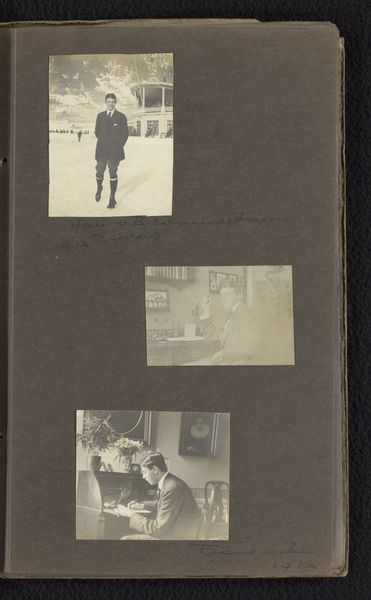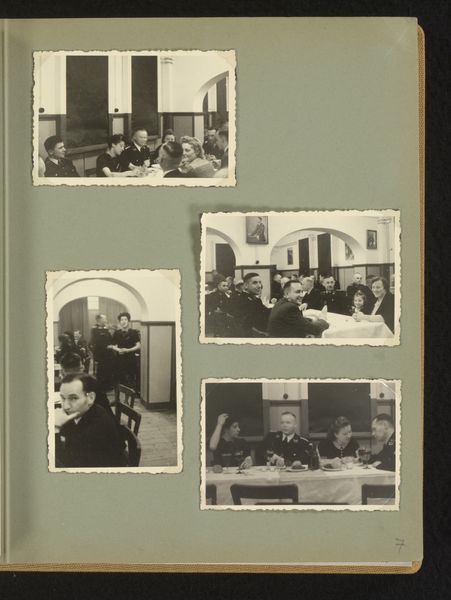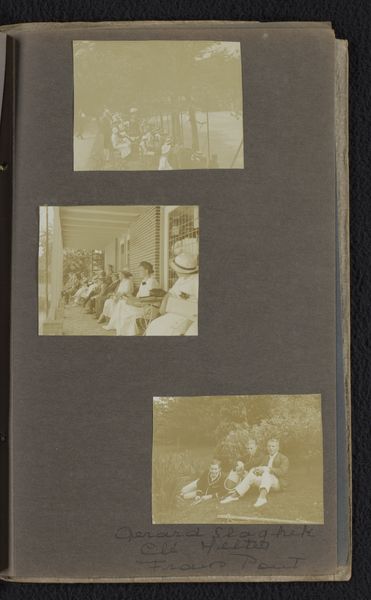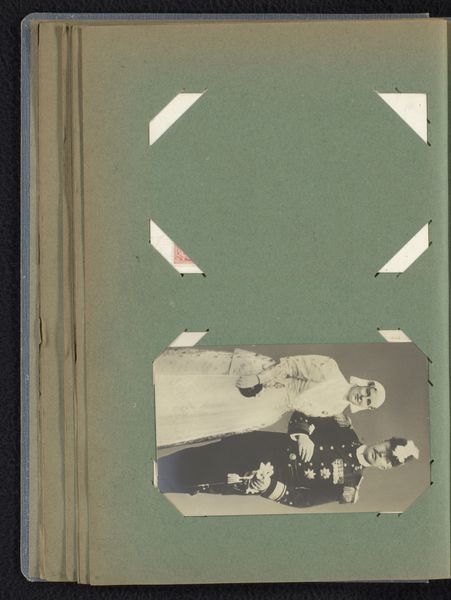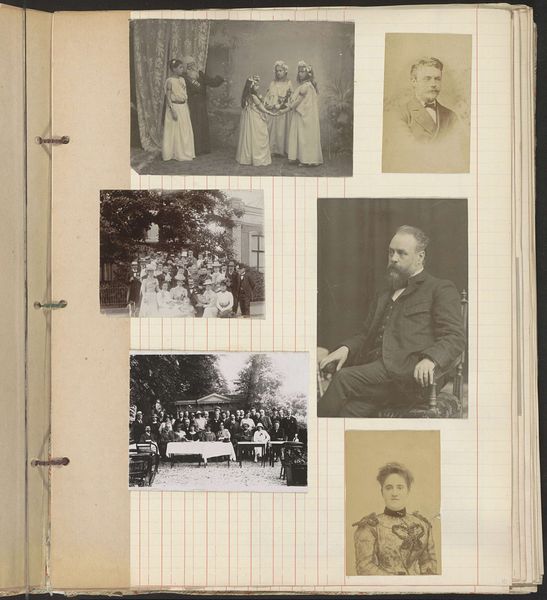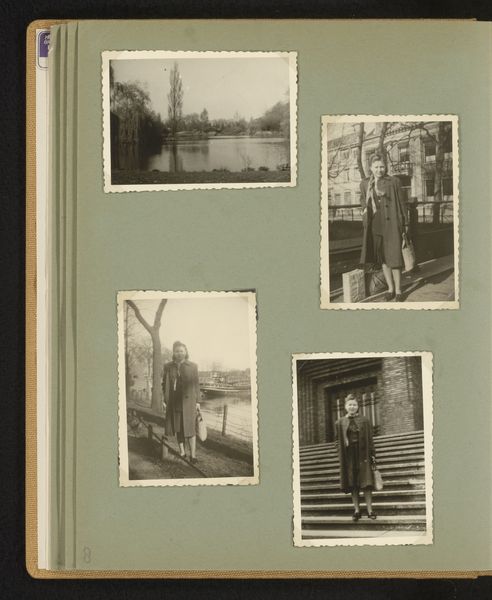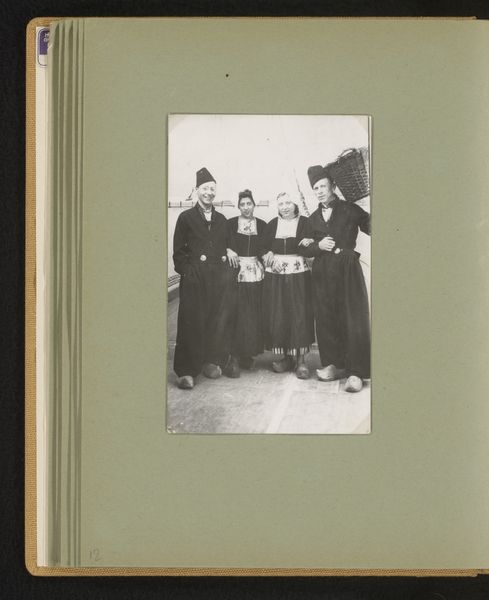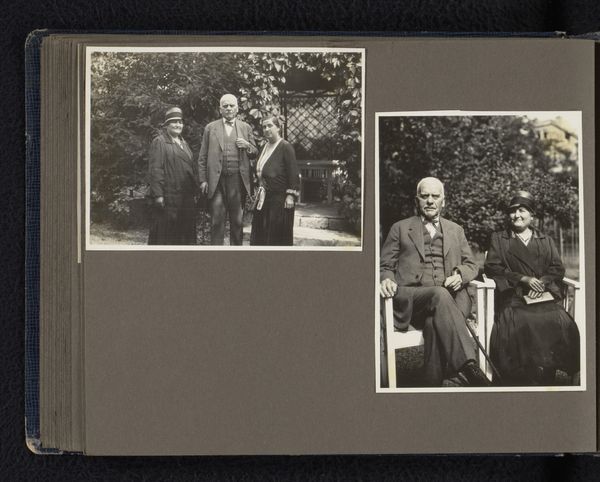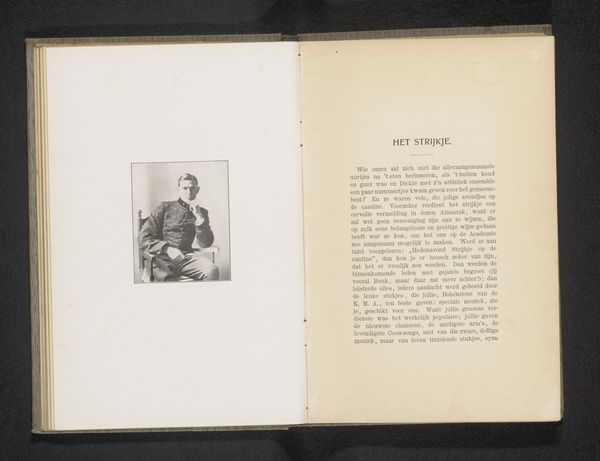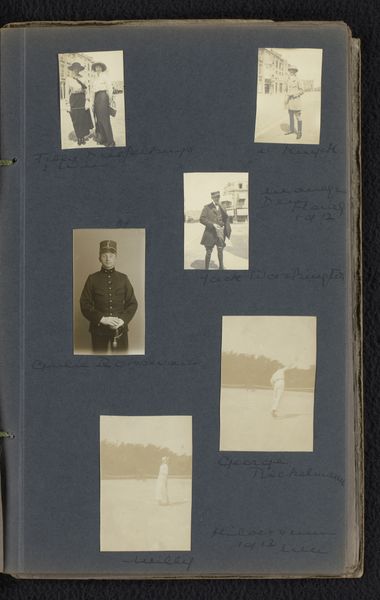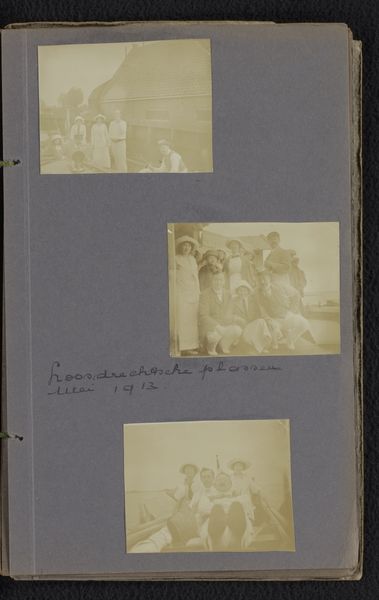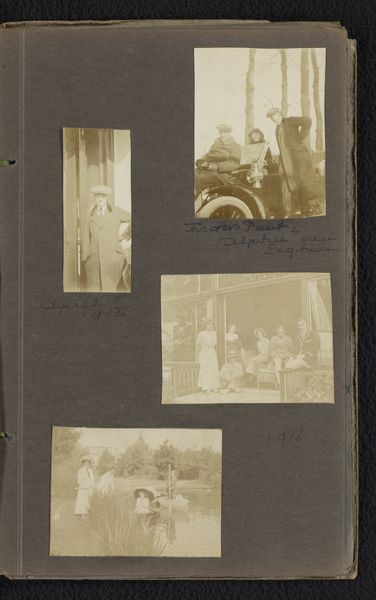
photography, gelatin-silver-print
#
portrait
#
still-life-photography
#
photography
#
group-portraits
#
gelatin-silver-print
#
realism
Dimensions: height 62 mm, width 90 mm, height 240 mm, width 190 mm
Copyright: Rijks Museum: Open Domain
Curator: This gelatin silver print, entitled "Pasfoto, familiefoto en kerstviering in Utrecht, 1943," presents a poignant visual document from possibly 1943 or 1944. My immediate sense is one of fragmented memories, little black and white islands afloat in a sea of faded green. The photographic grouping seems deliberately constructed, an artful yet sorrowful assemblage. Editor: Constructed and inherently laden with power dynamics. Consider the subject: We see three separate photos. The consistent military presence immediately foregrounds questions about Dutch collaboration and resistance during the Nazi occupation. The group portrait juxtaposed against images of an authority figure creates a stark and disquieting effect. Curator: I understand your perspective, and it’s valuable. I’m also interested in the visual language itself. Notice how the sharp focus of the portraits contrasts with the softer, more diffused light in the family photograph. The crisp delineation emphasizes the rigid formality of the official imagery. The texture and tone within each frame offer distinct qualities. Editor: And what story do these photographic methods begin to tell? A tale of the complex roles individuals had to take during wartime—forced compliance against familial longing and intimate relationships? The images are silent, yes, but in the contrast you're noticing, I read not only formal decisions but embedded commentary. This contrast embodies how political identity overshadows the others. Curator: The composition invites the viewer to contemplate these interwoven narratives, that I will agree with you on. How these ordinary, intimate moments, suggested by the "kerstviering", co-exist with larger social constructs. It's interesting how each print varies. Editor: It’s more than co-existence—it’s negotiation, or perhaps, survival. It subtly forces the viewer to address an uncomfortable tension, and reminds us that even the most banal image or memory could, and perhaps still does, embody conflict. It's a reminder of war’s insidious way of inserting itself into even the most personal, private moments. Curator: I find myself moved by the simple elegance of these photographic forms that hold many questions unanswered still today. Editor: Indeed, it challenges us to acknowledge the narratives often omitted from official historical accounts, and the photographic collection forces viewers to contemplate an urgent story about complicity, family, and social expectation.
Comments
No comments
Be the first to comment and join the conversation on the ultimate creative platform.
